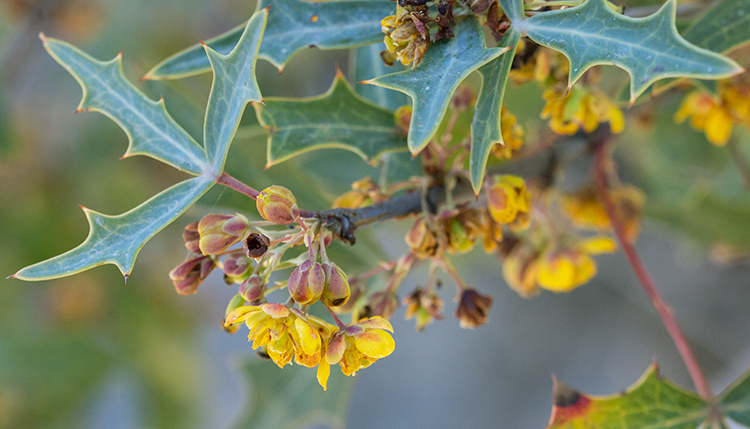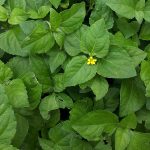This native species is highly drought-resilient and well-suited for our soil types. Plus, it’s immensely popular among pollinators and fruit foragers alike.
Hiking along a high oak rimmed bluff on a cool, crisp February morning, I caught scent of something deliciously sweet. My mind immediately conjured the image of a warm, honey-drizzled sopapilla as I whipped around to seek out the source of this decadent aroma.
Nearby, covered in spectacular yellow blossoms, was a bushy shrub with formidable silvery-green foliage. Stepping next to it, and careful to avoid the thorny leaves, I inhaled deeply and let the honey-scented flowers envelope me. The agarita is in bloom!

Having spent my formative years roaming the vast flatness of the Rio Grande’s alluvial delta plain, my recent relocation to San Antonio has me absolutely enamored with the rolling hills, rocky outcroppings, and exciting new plants and animals the area has to offer. Agarita (Berberis trifoliolata), with its prickly, exaggerated holly-like leaves and soft, beautiful color, has stood out in particular as a favorite iconic plant of the Hill Country.
As a native species that is highly drought-resilient and suited for our soil types, as well as immensely attractive and wonderful for pollinators and fruit foragers alike, it surprises me to see so few agarita plants in residential landscapes.
Perhaps it’s the prickly leaves, but they’re actually an asset when trying to avoid the insistent munching of our urban deer populations. Plus, they provide ideal shelter and protection for many birds and other small animals.
Native Americans favored agarita for its medicinal properties, sweet red berries, and even the yellow dye made from its roots. Today, agarita jelly, made from the berries, is a delicious staple of the Hill Country.
So next time you’re shopping for something attractive to plant in your yard, consider this jewel of a plant. It prefers sun, but will do well in partial shade, and would make a great and healthy replacement for the overabundance of non-native (not to mention poisonous!) nandina found throughout the city.
In the meantime, take advantage of these cooler days and get outside to smell the agarita!




